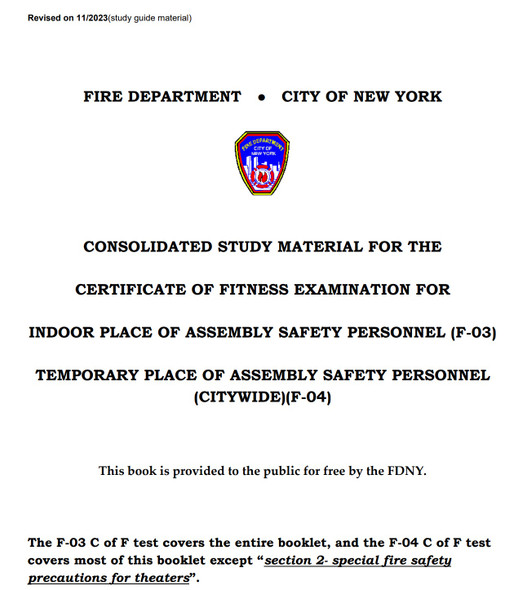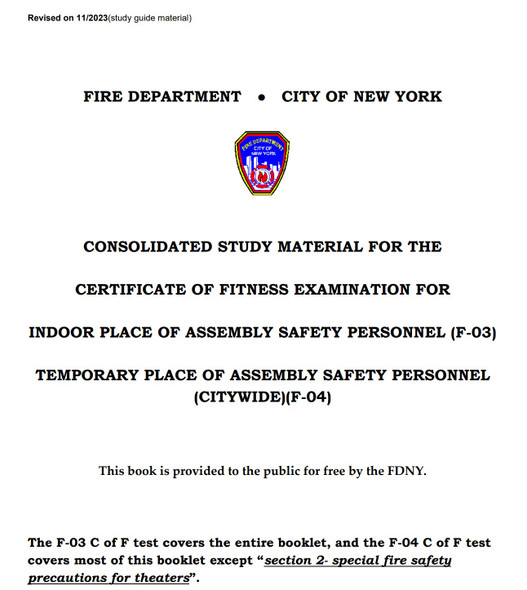- Home
- ** FREE DOWNLOADS FDNY **
- Safe Lithium-Ion Battery Charging and Storage Based on FDNY Guidelines (pdf file)
hpdsigns.nyc
Safe Lithium-Ion Battery Charging and Storage Based on FDNY Guidelines (pdf file)
- SKU:
- Safe Lithium-Ion Battery Charging and Storage Based on FDNY
- UPC:
- MPN:
- Safe Lithium-Ion Battery Charging and Storage Ba
Description
SAFE LITHIUM-ION BATTERY CHARGING AND STORAGE FDNY NYC
DOWNLOAD FOR FREE OUR PDF FILE
Safe Lithium-Ion Battery Charging and Storage Based on FDNY Guidelines
Lithium-ion batteries, commonly found in personal mobility devices like e-bikes and e-scooters, offer convenience and efficiency. However, their improper charging and storage can pose significant fire risks. The Fire Department of New York (FDNY) has outlined essential safety practices in the 2022 Fire Code Section 309.3 to mitigate these dangers. Following these guidelines can ensure safe usage and prevent potential hazards.
Key Guidelines from FDNY Fire Code Section 309.3
-
Approved Charging Equipment:
- Use only the charger that comes with the device or a charger certified by a recognized testing laboratory (e.g., UL, ETL). Using an incompatible charger can overcharge the battery, leading to overheating or explosion.
-
Proper Charging Location:
- Charge your device in a well-ventilated area. Avoid charging in confined spaces, such as closets or cabinets, where heat can build up.
- Do not charge devices on beds, couches, or other flammable surfaces. Use a sturdy, non-flammable surface instead.
-
Unattended Charging:
- Never leave a device charging unattended. Many battery-related fires occur when the device is left charging overnight or when the user is away.
-
Avoid Overcharging:
- Do not leave devices plugged in after they are fully charged. Overcharging can degrade the battery and increase the risk of a fire.
-
Inspect and Maintain:
- Regularly inspect batteries for any signs of damage, such as swelling, leaking, or unusual odors. If any damage is detected, stop using the battery immediately.
- Keep the charging equipment and battery contacts clean and dry.
-
Safe Storage:
- Store batteries at room temperature, away from direct sunlight and heat sources. Extreme temperatures can damage the battery and increase the risk of fire.
- Avoid storing batteries in areas with high humidity or where they could come into contact with water.
-
Handling Damaged Batteries:
- If a battery is damaged, do not use it. Place it in a non-flammable container, such as a metal box, and contact your local recycling center for proper disposal.
-
Fire Safety Equipment:
- Keep a fire extinguisher nearby when charging devices. Ensure that it is suitable for electrical fires (Class C).
-
Emergency Preparedness:
- Be aware of the signs of a battery fire, such as hissing, smoke, or an unusual smell. If you detect any of these signs, unplug the device immediately and move it to a safe location if possible.
- In the event of a fire, evacuate the area and call 911. Do not attempt to extinguish the fire with water.
Additional Best Practices
-
Battery Quality:
- Purchase batteries from reputable manufacturers and suppliers. Counterfeit or low-quality batteries are more prone to failure and fire.
-
Charging Practices:
- Avoid charging multiple devices at once on the same power outlet. Overloading an outlet can cause an electrical fire.
-
Educate and Inform:
- Educate family members or roommates about the potential hazards of lithium-ion batteries and the importance of following safety guidelines.
-
Stay Updated:
- Keep abreast of any recalls or safety notices related to the batteries or devices you use. Manufacturers often update their safety recommendations based on new research and incidents.
By adhering to these FDNY guidelines and best practices, users can significantly reduce the risk of fires related to lithium-ion batteries in personal mobility devices. Safety is paramount, and taking these precautions will help ensure that your devices are used and stored in the safest manner possible.
DISCLAIMER these codes may not be the most recent version. The State / federal or other regulation department may have more current or accurate information. We make no warranties or guarantees about the accuracy, completeness, or adequacy of the information contained on this site or the information linked to on the state site. Please check official sources. The requirements for detector are determined by intended use and by applicable regulation. The BUYER is responsible for determining the appropriate detector needed. WE make no warranty or representation of suitability of a detector to any code or for any specific application. IT IS THE CUSTOMER'S RESPONSIBILITY TO ENSURE THAT THE DETECTORS THE CUSTOMER ORDERS ARE IN COMPLIANCE WITH ALL STATE, FEDERAL, LOCAL, AND MUNICIPAL LAWS. Please review terms and conditions prior to purchase. For more information about what is required, see the laws that are referenced and the rules applicable to your city and state. This page is for informational purposes only and is not intended as legal advice, professional advice or a statement of law. You may wish to consult with an attorney.
Related Products

DANGERS OF LITHIUM-ION BATTERIES (pdf file)
hpdsigns.nyc


Lithium-ion Batteries safety NYC (PDF FILE)
hpdsigns.nyc

Lithium-ion batteries or mobility devices involved in fire 2022 (PDF FILE)
hpdsigns.nyc


Lithium ion batteries safety tips (PDF)
hpdsigns.nyc


CONSOLIDATED STUDY MATERIAL FDNY 2023 (PDF FILE)
hpdsigns.nyc

